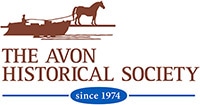aDNA – Ancient DNA
The partnership of the Avon Historical Society, Avon Free Public Library, and Avon Senior Center is pleased to present the fourth lecture in a five-part webinar series entitled “Unearthing History: The Discovery of a 12,500-year-old Paleo-Indian Site along the Farmington River in Avon, CT.”
The fourth lecture, entitled “Looking into the Past with Ancient DNA,” will be presented by Christina M. Balentine, Ph.D. candidate at the University of Texas and University of Connecticut & Samantha Archer, M.A., in the doctoral program at the University of Connecticut. It will be held on Thursday, September 15, beginning at 7:00 pm via Zoom through a link from the Library. It is available free of charge.
Sign up at: www.avonctlibrary.info
When the 1993 blockbuster hit Jurassic Park premiered in theatres worldwide, people were captivated by the idea of scientists being able to extract DNA from long-dead organisms to study and potentially even bring them back to life. The first time that DNA was actually retrieved and studied from a long-dead organism was in 1984, when scientists sequenced DNA from a quagga, an extinct relative of the zebra. In the nearly 40 years since then, the field of ancient DNA (aDNA) research has exploded, with scientists being able to study DNA from 1-million-year-old mammoths, Neandertals, people who lived thousands of years ago to just a few hundred to thousands of years ago, ancient bacteria, plants, and more. But why is studying aDNA important? What kind of questions can the study of aDNA address? In this lecture, Christina Balentine & Samantha Archer will present a broad overview of aDNA research past and present, discuss the ethical considerations of working with priceless aDNA samples, and highlight dissertation research that uses aDNA to address very different questions about the lived experiences of humans in the past.
The “Unearthing History” series, sponsored by a grant from the Lower Farmington River and Salmon Brook Wild and Scenic Committee, is being held due to the 2019 excavation and discovery of a 12,500-year-old (10,000BC) Paleo-Indian site six feet below ground during a CT Department of Transportation construction project of the now completed bridge on Old Farms and Waterville Roads at Route 10 in Avon, CT. The survey uncovered more than 15,000 artifacts that are characteristic of the Early and Middle Paleo-Indian periods. The site is named for Brian D. Jones, the late Connecticut State Archaeologist, who led the effort to dig deep based on earlier excavations in the area over the past few decades. It is now known as the oldest human occupation site in Southern New England.
According to Dr. Lucianne Lavin, Director of Research and Collections Emeritus of the Institute for American Indian Studies in Washington, CT, the last Ice Age in this region began to melt away at about 17,500BP (Before the Present). As it receded, a lush new land was exposed that provided for animal life to return about 13,500BP in the form of tundra-grazing animals such as mastodons, mammoths, horses, giant beaver, caribou, and more. The ancient communities of the Paleo-Indians are thought to have begun to arrive in the northeast after that time in search of those animals for food. They were the first settlers of what is now Connecticut and southern New England. (Connecticut’s Indigenous Peoples, by Lucianne Lavin, 2013, Yale University Press)
Partners in this series include the Farmington River Watershed Association, Institute of American Indian Studies, Washington, CT, and the Avon Land Trust. The fifth webinar will be an update on the scientific analysis of the Brian D. Jones from Archeological and Historical Services, Storrs, CT. It will be held on Thursday, October 13 at 7:00pm.
2022 VIRTUAL HISTORY SERIES – Series created by the Avon Historical Society, Avon Free Public Library & Avon Senior Center.
Sponsored by a grant from the Lower Farmington River and Salmon Brook Wild and Scenic Committee
Sign up for the webinar at: www.avonctlibrary.info






